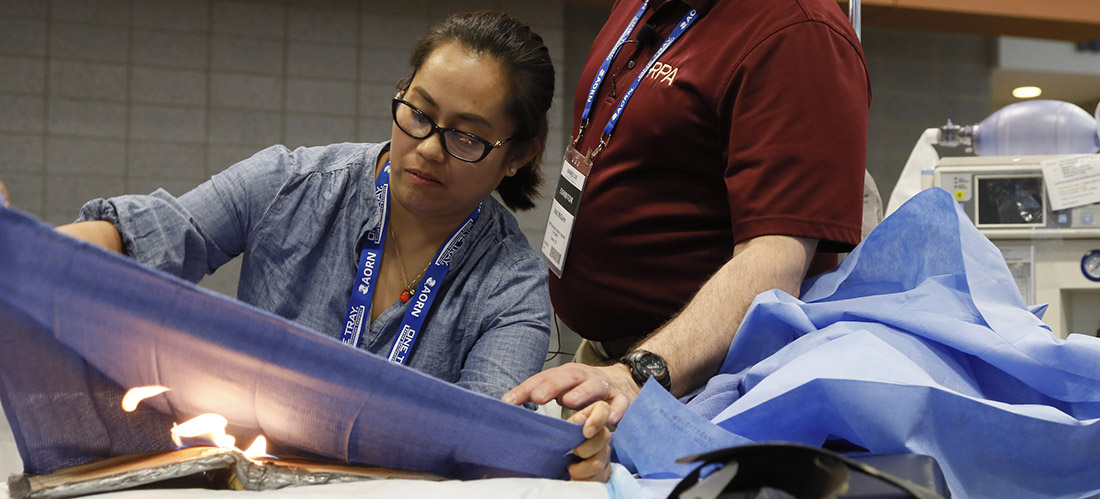Surgical Fire! 4 Tips to Keep Patients Safe
By: Aorn Staff
Published: 4/6/2022
Surgical Fire! 4 Tips to Keep Patients Safe
A Conversation with Darren Osleger, Fire & Emergency Management Consultant

Do you know how quickly you would react to put out a surgical fire on a patient? Would you think to grab a towel to eliminate oxygen from the fire and quickly suppress it to reduce patient burns?
Darren Osleger, Fire & Emergency Management Consultant, believes there is no better way to be prepared for fire response than training with real fire.
Attendees at Global Surgical Conference & Expo 2019 were given the chance to experience just how fast a fire situation can escalate and practice proper extinguishing through his hands-on simulated training.
Even more important than fire response is fire prevention. Osleger shares four important fire prevention tips any nurse and their surgical team members can practice in training to ensure a safe response to fire and to help create an operating room fire safety policy.
1. Know Your Escape Route
Work with your engineering department to find out where the fire/smoke barrier walls are located within your facility to identify proper evacuation locations. Remember that surgical teams must evacuate the patient to a similar functioning space for all aspects of care, such as access to oxygen, suctioning, and monitoring on the opposite side of the fire/smoke barrier wall.
2. Educate your Local Fire Department
Give your local firefighters a tour of your OR so you have a shared plan for evacuation protocol. Let them see and understand how delicate each procedure is and emphasize the importance of working together during fire emergencies.
3. Avoid Fire in Your OR
Make sure everyone working in your OR is familiar with the fire triangle and the unique risks for fire that each team member holds, whether it’s an electric cautery device that can ignite the fire, oxygen delivered to the patient that can fan a fire, or surgical drapes that can feed a fire.
4. Be Ready to Put Out the Fire
Did you know that a traditional 10lb ABC fire extinguisher should not be in the OR, nor should it be brought into the OR while the surgical team and patient are still inside? A clean agent fire extinguisher should be present inside the OR, while CO2 fire extinguishers are typically located in the OR for class “B” (liquid) and “C” (electrical) fires.
Nurses who participated in a simulated fire training at AORN Expo enjoyed discharging a fire extinguisher within the demo area. The sound, the feel, the excitement had many nurses going back to their facilities with a better understanding of the importance of using the right extinguisher in the OR.
Looking for more resources to be fire-ready as a team? Review the AORN Fire Safety Tool Kit together.
Darren Osleger, Fire & Emergency Management Consultant, recently presented his simulation in the Expo Hall during the AORN Global Surgical Conference & Expo in Nashville, TN.

